- Battery Manufacturing Equipment
- Battery Laboratory Assembly Equipment
- Battery Pack Assembly Equipment
- Sodium Ion Battery Manufacturing Equipment
- Dry Electrode Assembly Equipment
- Supercapacitor Assembly Equipment
- Battery Laboratory Equipment
- Li ion Battery Tester
- Battery Safety Tester
- Battery Material Tester
- Film Coating Machine
- Rolling Press Machine
- Electrode Mixer
- Coin Cell Crimping Machine
- Coin Cell Electrode Disc Punching
- Pouch Cell Sealing Machine
- Pouch Cell Stacking Machine
- Pouch Cell Forming Machine
- Pouch Cell Ultrasonic Welder
- Pouch Cell Electrode Die Cutter
- Cylinder Cell Sealing Machine
- Cylinder Cell Grooving Machine
- Cylinder Cell Slitting Machine
- Cylinder Cell Winding Machine
- Cylinder Cell Spot Welding Machine
- Electrolyte Filling
- Type Test Cell
- Other Battery Making Machine
- NMP Solvent Treatment System
- Li ion Battery Materials
- Ni / Al / Cu Metal Foam
- Cathode Active Materials
- Anode Active Materials
- Coin Cell Parts
- Lithium Chip
- Cylindrical Cell Parts
- Battery Current Collectors
- Battery Conductive Materials
- Electrolyte
- Battery Binder
- Separator and Tape
- Aluminum Laminate Film
- Nickel Strip/Foil
- Battery Tabs
- Graphene Materials
- Cu / Al / Ni / Stainless steel Foil
- Vacuum Glove Box
- Lab Furnaces
- Ball Mill
- Hydraulic Press
- Laboratory Equipment
- Customized Electrode
blog
Pouch Cell Production Plant
- 2023-08-17
Introduction:
The evolution of lithium-ion battery technology has paved the way for revolutionary advancements in industries ranging from electric vehicles to portable electronics and renewable energy storage systems. At the heart of this transformation lies the Pouch Cell Production Plant, a complex and meticulously orchestrated facility that brings together cutting-edge technology, precise engineering, and rigorous quality control to produce high-performance lithium-ion batteries. In this comprehensive exploration, we delve into the multifaceted world of pouch cell production, unraveling the intricate steps and processes that culminate in the creation of these essential energy storage devices.
1. Material Preparation: The Foundation of Excellence
At the inception of the production process, the preparation of materials takes center stage. Several critical components lay the foundation for the battery's performance:
Cathode Materials: These materials, often lithium cobalt oxide (LiCoO2), lithium iron phosphate (LiFePO4 Powder), or other variations, undergo a series of processes. They are mixed with binders and conductive additives to form a slurry, which is then coated onto current collector foils made of aluminum or copper. The coated foils are dried to remove solvents, resulting in cathode sheets with precise thickness and composition.
Anode Materials: Anode materials, usually graphite or silicon-based, are similarly prepared. They are mixed with binders and conductive additives to create an anode slurry, which is coated onto current collector foils and dried to form anode sheets.
Separator Materials: Polymer separators are chosen for their non-conductive properties. These thin sheets are engineered to ensure that ions can pass through while preventing direct contact between the cathode and anode, which could lead to short circuits.
Electrolyte Preparation: Electrolyte is a critical component that enables ion movement between the cathode and anode. It's composed of lithium salt dissolved in organic solvents, forming a conductive medium.
2. Electrode Sheet Preparation: Crafting the Heart of the Battery
Once the cathode, anode, and separator materials are prepared, the next step involves creating the electrode sheets that form the core of the battery:
Cathode Sheet Formation: The cathode sheets are cut into precise dimensions and assembled with separator sheets, creating a layered structure. This layered structure ensures that cathode material is sandwiched between two separator sheets.
Anode Sheet Formation: Similarly, anode sheets are cut and assembled with separator sheets to mirror the cathode structure.
3. Electrode Stacking and Assembly: The Birth of the Battery Core
The electrode sheets created in the previous step are meticulously stacked and aligned to form the core of the battery:
Electrode Layer Stacking: The cathode and anode sheets, along with their separator layers, are stacked in an alternating fashion to create the anode-cathode-anode structure. This layered assembly is known as the electrode stack.
Electrolyte Injection: Once the electrode stack is formed, electrolyte is injected into the stack to ensure that it permeates the separator material and fills the porous structure of the electrode layers. This step ensures that ions can move freely between the cathode and anode during charge and discharge cycles.
4. Encapsulation:
The battery is encapsulated using flexible film, creating an external protective layer.
Encapsulation materials are typically polymer-based, providing resistance to high temperatures and chemical corrosion.
5. Module Assembly:
Multiple cells are connected to form battery modules.
Battery Management System (BMS) monitors and manages charging and discharging processes, ensuring stability and safety of the battery module.
6. Testing and Quality Control:
Batteries undergo performance testing, including capacity, voltage, cycle life, etc.
Safety tests are conducted to ensure battery safety under various conditions.
7. Packaging and Shipping:
Batteries or battery modules are packaged neatly to prevent damage and contamination.
Products are prepared for market distribution and customer delivery.
Conclusion:
The evolution of lithium-ion battery technology has paved the way for revolutionary advancements in industries ranging from electric vehicles to portable electronics and renewable energy storage systems. At the heart of this transformation lies the Pouch Cell Production Plant, a complex and meticulously orchestrated facility that brings together cutting-edge technology, precise engineering, and rigorous quality control to produce high-performance lithium-ion batteries. In this comprehensive exploration, we delve into the multifaceted world of pouch cell production, unraveling the intricate steps and processes that culminate in the creation of these essential energy storage devices.
1. Material Preparation: The Foundation of Excellence
At the inception of the production process, the preparation of materials takes center stage. Several critical components lay the foundation for the battery's performance:
Cathode Materials: These materials, often lithium cobalt oxide (LiCoO2), lithium iron phosphate (LiFePO4 Powder), or other variations, undergo a series of processes. They are mixed with binders and conductive additives to form a slurry, which is then coated onto current collector foils made of aluminum or copper. The coated foils are dried to remove solvents, resulting in cathode sheets with precise thickness and composition.
Anode Materials: Anode materials, usually graphite or silicon-based, are similarly prepared. They are mixed with binders and conductive additives to create an anode slurry, which is coated onto current collector foils and dried to form anode sheets.
Separator Materials: Polymer separators are chosen for their non-conductive properties. These thin sheets are engineered to ensure that ions can pass through while preventing direct contact between the cathode and anode, which could lead to short circuits.
Electrolyte Preparation: Electrolyte is a critical component that enables ion movement between the cathode and anode. It's composed of lithium salt dissolved in organic solvents, forming a conductive medium.
2. Electrode Sheet Preparation: Crafting the Heart of the Battery
Once the cathode, anode, and separator materials are prepared, the next step involves creating the electrode sheets that form the core of the battery:
Cathode Sheet Formation: The cathode sheets are cut into precise dimensions and assembled with separator sheets, creating a layered structure. This layered structure ensures that cathode material is sandwiched between two separator sheets.
Anode Sheet Formation: Similarly, anode sheets are cut and assembled with separator sheets to mirror the cathode structure.
3. Electrode Stacking and Assembly: The Birth of the Battery Core
The electrode sheets created in the previous step are meticulously stacked and aligned to form the core of the battery:
Electrode Layer Stacking: The cathode and anode sheets, along with their separator layers, are stacked in an alternating fashion to create the anode-cathode-anode structure. This layered assembly is known as the electrode stack.
Electrolyte Injection: Once the electrode stack is formed, electrolyte is injected into the stack to ensure that it permeates the separator material and fills the porous structure of the electrode layers. This step ensures that ions can move freely between the cathode and anode during charge and discharge cycles.
4. Encapsulation:
The battery is encapsulated using flexible film, creating an external protective layer.
Encapsulation materials are typically polymer-based, providing resistance to high temperatures and chemical corrosion.
5. Module Assembly:
Multiple cells are connected to form battery modules.
Battery Management System (BMS) monitors and manages charging and discharging processes, ensuring stability and safety of the battery module.
6. Testing and Quality Control:
Batteries undergo performance testing, including capacity, voltage, cycle life, etc.
Safety tests are conducted to ensure battery safety under various conditions.
7. Packaging and Shipping:
Batteries or battery modules are packaged neatly to prevent damage and contamination.
Products are prepared for market distribution and customer delivery.
Conclusion:
The production process of a "Pouch Cell Production Plant" encompasses material preparation, electrode assembly, encapsulation, module assembly, testing, and quality control. Each step is intricately coordinated to ensure the production of high-quality, high-performance lithium-ion battery products used extensively in electric vehicles, portable electronics, energy storage systems, and more. Precision equipment, technology, and stringent quality control are crucial at every stage to guarantee battery performance, safety, and reliability.
HOT PRODUCTS
-
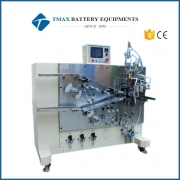 Automatic Cylinderical Battery Electrode Winding Machine
Read More
Automatic Cylinderical Battery Electrode Winding Machine
Read More
-
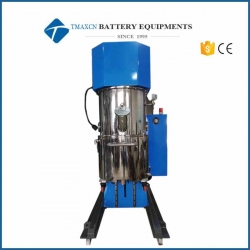 100-200L Double Planetary Vacuum Mixing Machine for Lithium Battery Slurry
Read More
100-200L Double Planetary Vacuum Mixing Machine for Lithium Battery Slurry
Read More
-
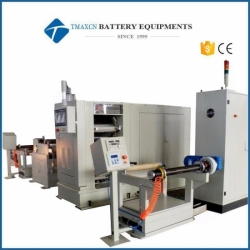 Large Heating Roller Press Machine Calender For Li ion Battery Production Line
Read More
Large Heating Roller Press Machine Calender For Li ion Battery Production Line
Read More
-
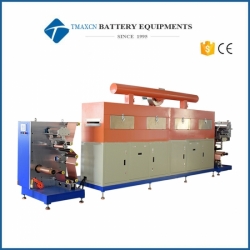 Large 3 Rollers Battery Electrode Film Intermittent Coating Machine for Pilot Production Line
Read More
Large 3 Rollers Battery Electrode Film Intermittent Coating Machine for Pilot Production Line
Read More
-
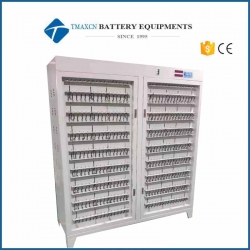 512 Channel 5V3A Battery Grading Machine/Battery Charge Discharge Machine Tester
Read More
512 Channel 5V3A Battery Grading Machine/Battery Charge Discharge Machine Tester
Read More


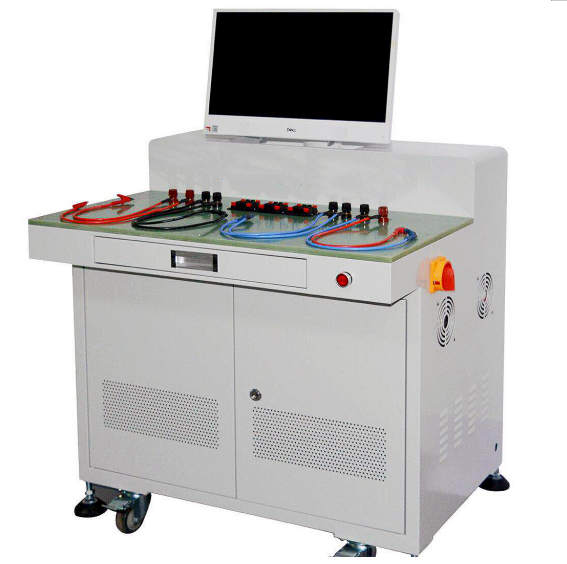
 cindy@tmaxcn.com
cindy@tmaxcn.com David@battery-equipments.com
David@battery-equipments.com Wechat 13506084915
Wechat 13506084915